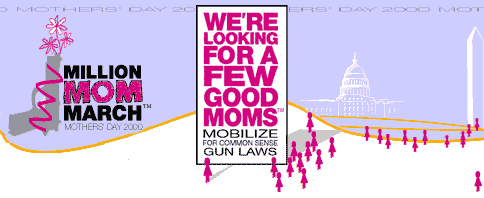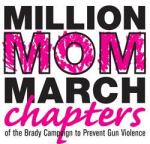In a previous post about Brian Anse Patrick’s book about the concealed weapon carry movement in the United States, I reviewed Patrick’s explanation for the success of this movement. Part of his explanation of its success is also an explanation of the failure of proponents of gun control. According to Patrick, anti-gun groups have no organic existence: “Modern anti-gun advocates have functioned mainly as professionally administered vertical bureaucracies, sometimes temporarily exciting mass attitudes or simulating mass support, but essentially lacking meaningful horizontal mobilization” (p. 64).
This is not just Patrick being critical of the anti-gun movement, either. Duke University political scientist Kristin A. Goss is a leading academic authority on gun control movements in the United States. Or, more accurately, on the lack of gun control movements in the U.S. Her book, Disarmed: The Missing Movement for Gun Control in America, is the story of the failure of the population to mobilize en masse in support of the types of gun regulations she argues they support attitudinally. She characterizes the failure to translate gun control attitudes into gun control advocacy as the “gun control participation paradox” (p. 3).
To Patrick’s point about gun control advocates as “professional administered vertical bureaucracies,” Goss argues that all the major gun control groups combined have less than 10% of the membership of the NRA alone (p. 18).
Goss notes, “The framers of the Constitution rigged the U.S. political system to frustrate the ambitions of bold policy reformers and to reward those who build consent from the ground up. Their plan succeeds to this day” (p. 3). As Patrick suggested in his work on the pro-gun movement, “gun culture is more robustly concrete-organic, if you will, than anti-gun culture” (p. xvi). Goss’s overall conclusion is the same: “Gun control advocates were not nearly as successful as their opponents were in using American federalism to advance their cause” (p. 3). Consequently, the gun control movement is “a movement that does not move very far very often” (Goss, p. 13).
According to Goss, the history of gun control legislation is one of passage by elites due to major societal events, without any mass mobilization. We saw this recently, for example, with the ram-rodding of the New York Secure Ammunition and Firearms Enforcement (SAFE) Act through the legislature there in 2013 after the Sandy Hook Elementary School massacre.
Goss argues that part of the failure of the gun control movement is also due to the resources and choices made by movement leaders. “Even as the United States has suffered through murders of public figures, workplace rampages, schoolroom massacres, and regular epidemics of ‘everyday’ gun violence, the nation has never witnessed a vigorous, nation-spanning social movement to control access to firearms.” Why? Goss sees two reasons: “in part because leaders of the pro-control majority have lacked external resources to underwrite such a movement and in part because these leaders have chosen political strategies that are anathema to movement building” (p. 29).
Goss’s book was published in 2006, based on data collection through the early 2000s. At the time, she was able to identify three cases in which efforts at “bottom-up incrementalism” (p. 176) seemed to be making a difference:
(1) The Brady Bill: exemplified incrementalism in that it was sold as a modification of the Gun Control Act of 1968 and was modeled on laws that had passed in more than a dozen states since 1968, and included more grassroots mobilization than was typical for the gun control “movement” to that point (pp. 176-79).
(2) The Local Ordinance Campaign in California: Beginning in the mid-1990s, gun control advocates began to challenge California’s 1969 preemption law by pursuing a legislative strategy at the local level. The effort was led by the Legal Community Against Violence (LCAV), which was formed by Bay Area attorneys following a mass murder at a law firm at 101 California Street in San Francisco in 1993. (In 2012 the group changed its name to the Law Center to Prevent Gun Violence). The LCAV advised local communities on how to pass gun control legislation, such as the City of Lafayette’s 1994 law “requiring gun dealers to obtain a police permit; barring gun sales near residential neighborhoods, schools, parks, and houses of worship; and requiring gun dealers to provide trigger-locking devices with guns” (p. 180). According to Goss, by the turn of the 21st century, 111 California cities and counties had implemented 300 firearms regulating ordinances, such as banning the sale of “Saturday Night Specials” and requiring dealers to record ammunition sales (p. 181).
According to Goss, “If there has ever been a movement for gun control in America, it unfolded in California in the 1990s” (p. 181).
(3) The Million Mom March: On May 14, 2000, a rally was held at the National Mall in Washington, DC to promote gun control. The rally was organized by Donna Dees-Thomases following a white supremacist’s attack on the North Valley Jewish Community Center in Granada Hills, California. According to the Brady Campaign’s website, Dees-Thomases “set out to mobilize moms in all 435 congressional districts over the next 9 months with the rallying cry: ‘Looking for a Few Good Moms to Mobilize for Common Sense Gun Laws.’” These common sense gun laws were developed by Handgun Control, Inc. After the March, the national Million Mom March organization went bankrupt and was absorbed by the Brady Campaign, but a number of local chapters survived – 40 to 60 in 20 states by early 2005, according to Goss (p. 184). The Brady Campaign website currently claims 68 chapters in 26 states. Activists in these local chapters practiced the kind of grassroots incrementalism that Goss argues is more effective in passing gun control legislation which then leads to greater mass mobilization which the leads to more legislation and so on.
Today, it seems, leaders of the gun control movement are heeding Goss’s message even more so. In the first place, today there is no lack of “external resources to underwrite” a gun control movement, thanks to Michael Bloomberg. But the list of wealthy individuals who gave money to the Washington state gun control initiative campaign in 2014 included Microsofters Bill and Melinda Gates ($50,000), Steve and Connie Ballmer ($580,000), and Jon Shirley ($50,000). And, according to Bloomberg News: “Nicolas Hanauer, co-founder of Second Avenue Partners, a Seattle-based venture capital firm, who gave $385,000; Brian McAndrews, CEO of Pandora Media Inc., the Oakland, California-based Internet radio service, $10,000; Hadi Partovi, a former Microsoft employee and CEO of Seattle-based Code.org, a nonprofit education group, $12,500; Lloyd Frink, co-founder of Zillow Inc., the Seattle-based real-estate website, $15,000; and Tom Alberg, co-founder of Seattle-based Madrona Venture Group LLC, a venture-capital firm, $5,000.”
Moreover, as suggested by the successful Washington initiative campaign, those external resources are being used to underwrite not a “rational national” political strategy, but one that recognizes the importance of state and local politics in America’s federal system.
Although Mom’s Demand Action for Gunsense in America and Everytown for Gun Safety have been criticized as “astroturf” movements – i.e., fake grassroots movements – that only exist due to Bloomberg’s largess, efforts such as those in Washington could stir up more of a true grassroots movement, as Goss’s analysis would predict. In which case she would have plenty of material for a follow-up volume on The No Longer Missing Movement for Gun Control in America.







Doesn’t matter how much money he pumps in to gun control. There is no movement for gun control. There are just the same paid activists rallying the same angry people and accomplishing nothing at all outside of deep blue states. The one place where someone can make the case that the state wasn’t deep blue was Colorado. We see what the results were there, didn’t we.
I call the gun grabbers “the Anti-Spartans.” There were only 300 of them to begin with, so they stood in the middle of DC and used their sycophantic news megaphone to make it look like they were bigger than they were. So long as we gun owners were stupid and tried to fight them in DC, where they could use the terrain to hold off our attacks, they did just fine. But once we realized that they basically didn’t exist out in the wild, we attacked them in the States. It’s been a bloodbath ever since.
We keep attacking them out here in the provinces and they keep standing athwart DC screaming “Stop!” We’ve spread Shall Issue Concealed Carry all the way to Wisconsin and Illinois. They’ve managed to keep Texas from allowing unlicensed Open Carry. We’ve gotten Heller and McDonald. They’ve gotten a few Circuits to uphold Maryland’s May Issue.
We outnumber then, out flanked them, and we have savvier, faster, more mobile and self directed troops than they have. They have cash. We have a self motivated volunteer army.
It’s all over but the crying. They just want to preserve the illusion that they went down fighting. Bloomie is personally funding the Gun Banner’s version of the Battle of the Bulge. It will be expensive for him, but he’ll suffer the same fate as the Wehrmacht.
LikeLike
[…] have reviewed on this site (like Glock and Gun Guys and Emily Gets Her Gun and Guns in America and Disarmed and The Cornered Cat and The […]
LikeLike
[…] Cook and Goss are both public policy professors at Duke University who have published extensively on guns. Cook is a sort of “Dean” of social scientific gun studies. He writes generally from a negative outcomes and gun regulation perspective. Goss wrote the definitive study of why the gun control movement has failed so far. […]
LikeLike
[…] relevant post I wrote back in March 2015 concerned “Kristin Goss on The (No Longer) Missing Movement for Gun Control in America?” Goss is a political scientist who studied the gun control movement in the wake of the Columbine […]
LikeLike